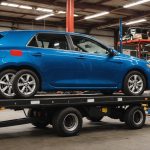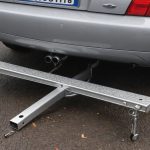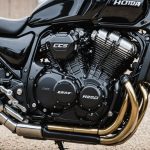Overview of the Crankshaft Position Sensor
The crankshaft position sensor is a critical component in the engine’s management system of a Harley-Davidson Dyna. Its primary purpose is to monitor the position and rotational speed of the crankshaft. By providing precise data to the engine control unit, it ensures optimal engine timing and fuel delivery, contributing to the motorcycle’s overall performance and efficiency. A malfunction in this sensor can lead to significant issues in motorcycle diagnostics.
Symptoms of a failing crankshaft position sensor can vary, but common indicators include frequent stalling or misfiring of the engine. The sensor’s failure may also trigger the vehicle’s check engine light, or cause performance inconsistencies and poor fuel economy. In severe cases, the motorcycle may fail to start altogether, as the sensor fails to communicate the necessary signals for ignition.
Also to discover : Essential strategies for keeping your honda cb650f air intake spotless: a comprehensive guide
These symptoms highlight the importance of timely diagnosis and repair of this sensor. Ensuring the crankshaft position sensor is functioning optimally is paramount for maintaining the reliability and safety of the motorcycle. Understanding its role in motorcycle diagnostics can aid in early detection of issues, avoiding extensive repairs. Regular checks and proactive maintenance can thus be invaluable in sustaining the motorcycle’s operational integrity.
Tools and Equipment Needed
When working on DIY motorcycle repairs, selecting the right motorcycle repair tools and diagnostic tools is essential for diagnosing and replacing the crankshaft position sensor efficiently. Essential tools include a set of wrenches and screwdrivers suitable for your Harley-Davidson Dyna, along with a reliable multimeter to accurately measure sensor voltage.
In parallel : Ultimate diy upgrade: transform your kawasaki zzr1400 with new foot pegs – a comprehensive guide
Diagnostic tools are crucial for pinpointing issues within the engine’s management system. Investing in a diagnostic scanner can be beneficial, as it allows you to read and interpret error codes, which aids in a precise assessment of the crankshaft position sensor’s status. Visual inspection tools such as a flashlight and a mirror are also handy for examining sensor placement and connections visually.
Replacement parts are another critical consideration. Obtaining quality replacement parts from reputable suppliers ensures longevity and reliability in the sensor’s performance. Moreover, consulting the motorcycle’s manual or the dealership for manufacturer-recommended parts is advisable to prevent mismatches.
Overall, a combination of the correct motorcycle repair tools, adept diagnostic equipment, and reliable replacement parts streamlines the repair process and enhances the effectiveness of motorcycle diagnostics.
Safety Precautions
When undertaking DIY motorcycle repairs on your Harley-Davidson Dyna, prioritising motorcycle safety is essential. Start by wearing appropriate safety gear. This should include protective gloves, safety goggles, and sturdy clothing to protect against potential hazards. These precautions minimise the risk of injury from sharp tools or parts during repair tasks.
Before you begin any work on the motorcycle, it is crucial to ensure that the vehicle is stable and secure. Use a motorcycle stand or jack to keep it upright, preventing tumbles or movements while you operate on the engine or electrical components. Disconnect the motorcycle’s battery to eliminate any electrical hazards, an often overlooked but crucial step in ensuring safety when dealing with electronic components.
As you proceed, remain cautious with electrical components. Ensure no exposed wires are present and double-check wire connections for wear or damage. Avoid working in wet or cluttered environments, which can increase the risk of accidents. Implementing these safety measures helps create a secure working space, allowing for focused and effective repair work, and contributes to successfully diagnosing and fixing crankshaft position issues. Following these precautions enhances both your safety and the quality of your repair results.
Diagnosing the Crankshaft Position Sensor
Diagnosing motorcycle issues, particularly involving the crankshaft position sensor, is essential for maintaining peak performance. Here’s how to handle sensor diagnosis effectively.
Initial Checks
Begin by conducting preliminary diagnostics using your diagnostic tools. Connect your scanner to the motorcycle’s onboard computer and check for error codes that can point towards potential issues with the crankshaft position sensor. Ensure you perform a visual inspection for any signs of wear or damage around the sensor area, including corroded wires or loosened connections.
Testing the Sensor
To assess the sensor’s functionality, use a multimeter to measure its voltage output. Set the multimeter to the correct setting, and with the ignition off, check the sensor’s connectors for continuity. Common faults may include unexpected voltage drops or irregular signals, which indicate a malfunctioning sensor. At this stage, closely examine all wire connections for any degradation or loose fittings, which might cause false readings or intermittent faults.
Confirming Diagnosis
After gathering diagnostic information and considering any visible symptoms, integrate these findings to confirm whether the crankshaft position sensor is the root of the problem. If uncertainties persist or the issue is complex, it is advisable to consult a professional mechanic for an expert motorcycle diagnostics assessment. This ensures thorough troubleshooting and prevents unnecessary repairs.
Replacing the Crankshaft Position Sensor
Replacing the crankshaft position sensor on your Harley-Davidson Dyna is a task that requires precision and understanding of motorcycle repair steps. Below, you’ll find a guide to help you through the process.
Step-by-Step Replacement Instructions
Begin by locating the sensor on the engine block, which may require removing other components for access. Carefully disconnect the electrical connector and unscrew the sensor from its mount. Ensure no debris falls into the engine while removing the old sensor.
To install the new sensor, align it correctly with the engine mount, then secure it with screws. Reconnect the electrical connector, ensuring a tight fit to prevent disconnection. Proper alignment and connection are crucial to ensure accurate signal transmission within the engine’s management system.
Tools Required for Replacement
To replace the sensor, you’ll need specific motorcycle repair tools, such as a socket wrench set, screwdrivers, and pliers. Organise your workspace by laying out tools and parts for easy access. Ensure you’re using manufacturer-recommended parts to maintain the motorcycle’s performance integrity.
Post-Replacement Checks
After installation, conduct thorough checks by starting the engine and monitoring for any performance fluctuations. Use diagnostic tools to clear previous error codes and check for new alerts. These steps help confirm a successful sensor installation and proper function.
Common Issues and Troubleshooting
Encountering problems after replacing or diagnosing the crankshaft position sensor can be frustrating but often indicates simple troubleshooting steps. Recognising common sensor issues is the first move toward effective motorcycle troubleshooting.
Common Problems Post-Replacement
After installing a new sensor, certain crankshaft position sensor problems may arise, such as a persistently flickering check engine light or recurring engine stalling. These issues are usually linked to improper sensor installation or faulty calibration.
Suggested Fixes
To address these problems, ensure the sensor is securely connected and correctly aligned. Recheck the wiring for any loose or corroded connections that might affect signal transmission. If symptoms persist, revisit the motorcycle diagnostics process using your diagnostic tools to verify error codes. If a mismatch in sensor specifications occurs, using manufacturer-recommended replacement parts might solve the issue.
Resources for Additional Support
For further assistance, tapping into community forums specific to Harley-Davidson Dyna owners can provide insights and shared solutions. Online resources and guides offer tutorials on troubleshooting intricate sensor issues. Consistently consulting these resources can enhance your troubleshooting skills and prolong your motorcycle’s performance.
Frequently Asked Questions
When it comes to the crankshaft position sensor on a Harley-Davidson Dyna, several common questions arise among motorcycle enthusiasts. Below, we address these queries with clarity and depth, providing expert motorcycle advice.
Do inaccurate function of the crankshaft position sensor affect overall engine performance?
Yes, inaccurate function of the crankshaft position sensor can significantly impact engine performance. This sensor provides crucial data for engine timing and fuel delivery, and any faults can disrupt these processes, leading to stalling and poor fuel economy.
Can I replace the crankshaft position sensor myself?
Absolutely, with the right motorcycle repair tools and following a systematic approach, you can undertake this repair. However, if you encounter complexities during the process, seek expert motorcycle advice. Ensuring you have high-quality replacement parts is essential for optimal performance post-replacement.
Are there myths or misconceptions about sensor diagnostics I should be aware of?
Indeed, a common misconception is that any diagnostic error relates directly to a faulty sensor. In reality, issues can stem from several factors including wiring issues or other underlying problems within the engine management system. Utilizing diagnostic tools accurately is key in discerning the root cause.
For further understanding, dive into online resources and community forums where you can exchange insights and experiences with fellow Harley-Davidson Dyna owners.






